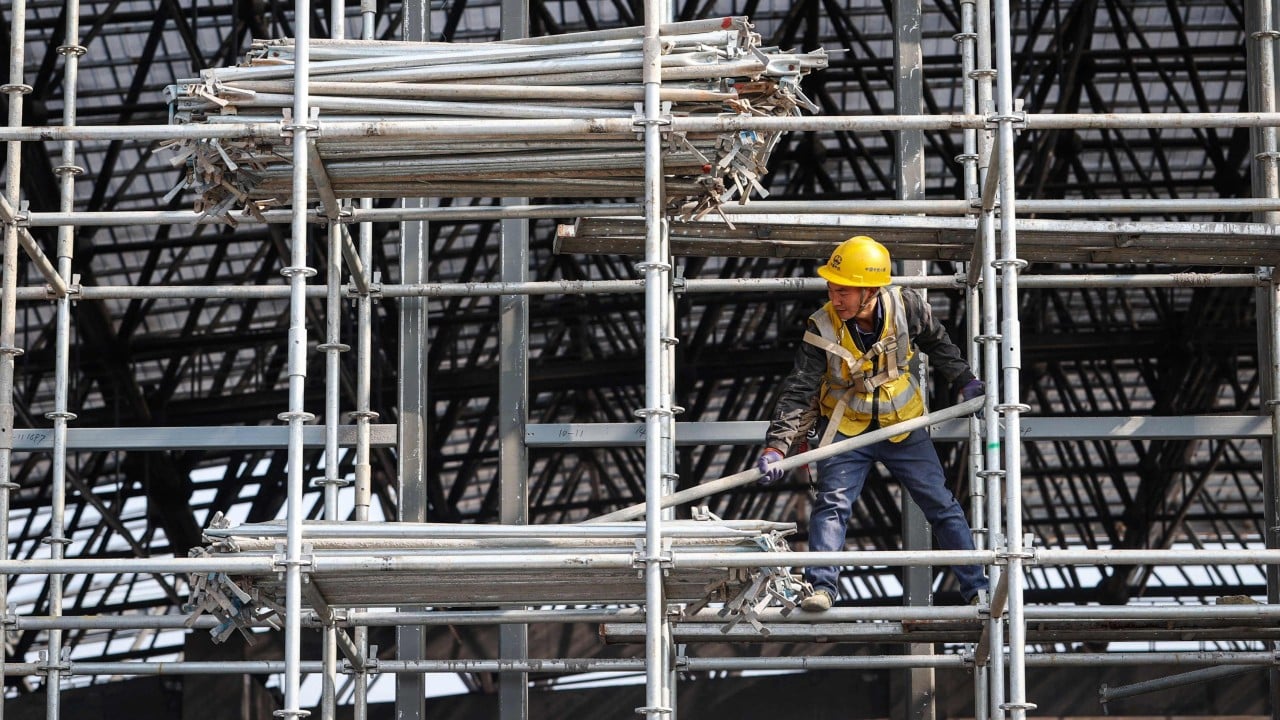A local government in western China has set up a team specialising in “smashing iron pots and selling the steel” – a metaphor for liquidating its assets at all costs – to address a debt crisis at a time the Chinese economy is at a crossroads to deal with rampant fiscal risk.
Named after an expression in Chinese that describes extreme determination, the special task force under the Bishan district government in the Chongqing municipality has come under the spotlight after a screenshot of an official document announcing its creation went viral on Wednesday.
The team was formed as massive debt piles at local levels increase systematic risk in the world’s second-largest economy, offering a glimpse into how local authorities are struggling to tackle the issue amid pressure from the top leadership.
Headed by the district’s executive deputy mayor and involving the finance department and the state-owned assets watchdog, the task force is part of a broader plan to monetise government assets announced earlier, according to the screenshot.
Calls to the district’s finance department went unanswered on Wednesday, but several mainland Chinese media outlets confirmed the initiative, quoting unnamed government sources.
Using a phrase reminiscent of the Great Leap Forward campaign in the late 1950s and early 1960s, when Chinese households were mobilised to literally melt their pots to contribute to the country’s steel production, the Chongqing task force was rolled out after the expression reappeared in official narratives in the past year amid mounting debt pressure.
The move came as Beijing said in the decision document released after the third plenum in July that it would explore the management of the national balance sheet to calculate nationwide liabilities and assets.
Li Yang, a senior government adviser and also head of the Beijing-based National Institution for Finance and Development, previously argued that while China’s debt had risen rapidly compared to other countries, it had also created valuable assets to cover the debt.
Li is well-known for his research on China’s national balance sheet, in which his research team lists the specific value of government assets and liabilities.
“The danger of debt depends on whether there are assets available to manage it in an emergency, and China certainly has these assets,” according to China’s Balance Sheet 2020, a book he co-authored in 2021.
That phrase is an extreme expression, but it indeed reflects the severe financial challenges faced by local governments
A report released by the Chongqing Municipal Development and Reform Commission in late June mentioned that last year, the commission, in collaboration with other municipal departments, drafted a comprehensive debt resolution plan and a strategy of “smashing iron pots and selling the steel” to liquidate assets.
Several other regions have also adopted similar measures to tackle their debts, with Zhuozi county in the Inner Mongolia autonomous region liquidating assets worth 1.34 billion yuan (US$188 million) in 2023 under an initiative with the same name, according to its government work report this year.
Similarly, in the Quangang district of Quanzhou in Fujian province, a government meeting in May discussed a plan to mitigate debt risks in the same way, according to a post on the government’s website.
“That phrase is an extreme expression, but it indeed reflects the severe financial challenges faced by local governments,” said Liu Zhiqin, a senior researcher with Renmin University’s Chongyang Institute for Financial Studies.
“It indicates that the difficulties at the grass roots level are greater than publicly acknowledged.”
But while the central government has encouraged the liquidation of assets to manage debt, local governments are left to interpret and implement directives in their own ways, he added.
In May 2022, China’s cabinet, the State Council, issued a directive on revitalising existing assets and boosting effective investment, urging regions with high debt ratios and fiscal pressures to accelerate asset liquidation to mitigate local government debt risks.
The “smashing” efforts appear to have yielded some results.
According to data from Chongqing’s finance department, while the city’s tax revenue grew by only 2.8 per cent year on year to 80.1 billion yuan in the first half of the year, non-tax revenue jumped by 31.2 per cent to 50.6 billion yuan, driven mainly by asset disposals.
The city’s midyear fiscal report emphasised that efforts to liquidate state-owned assets, such as buildings, land and large equipment, would be intensified to maximise financial resources.
Nationally, non-tax revenue grew by 12 per cent in the first seven months of the year, accounting for 18 per cent of the general public budget revenue, up 2.4 percentage points from the previous year.


